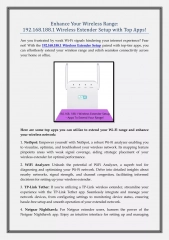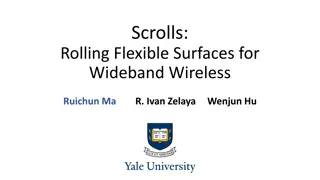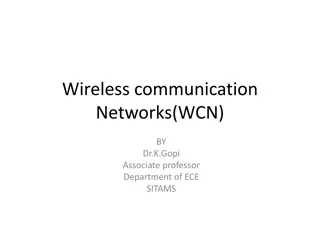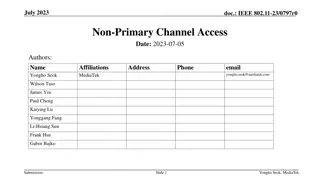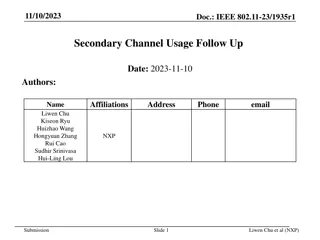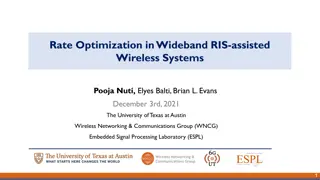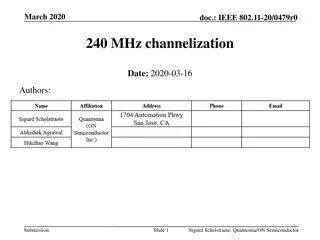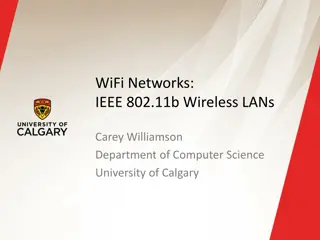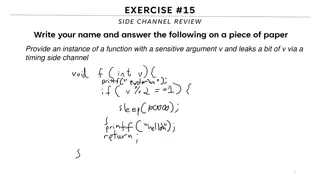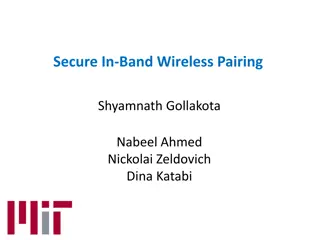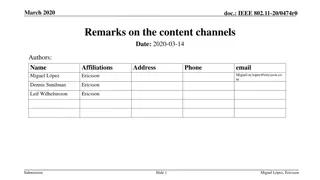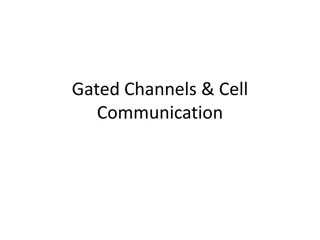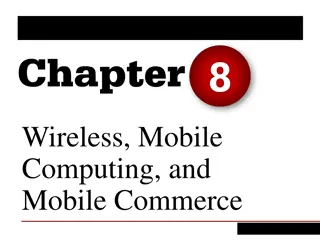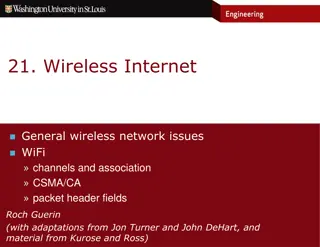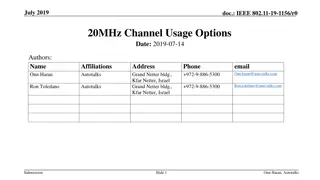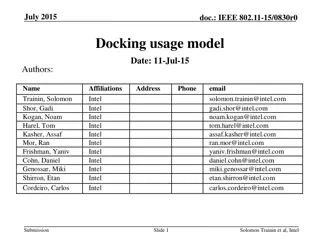
Wireless Channel Characteristics and Design Factors
Explore the fundamental aspects of wireless channels, including path loss, fading effects, interference, and Doppler shift. Learn about key models, parameters, and mitigation techniques in wireless communication design.
Download Presentation

Please find below an Image/Link to download the presentation.
The content on the website is provided AS IS for your information and personal use only. It may not be sold, licensed, or shared on other websites without obtaining consent from the author. If you encounter any issues during the download, it is possible that the publisher has removed the file from their server.
You are allowed to download the files provided on this website for personal or commercial use, subject to the condition that they are used lawfully. All files are the property of their respective owners.
The content on the website is provided AS IS for your information and personal use only. It may not be sold, licensed, or shared on other websites without obtaining consent from the author.
E N D
Presentation Transcript
UNIT I WIRELESS CHANNELS
TOPICS Path loss models: Free Space and Two-Ray models Link Budget design Parameters of mobile multipath channels Time dispersion parameters Coherence bandwidth Doppler spread & Coherence time Small Scale fading Fading effects due to multipath time delay spread Fading effects due to doppler spread
Introduction Wireless communication broadcasting and reception of signals by an appropriate receiver through wireless medium (air)
Characteristics of wireless channels Path loss Fading Interference Doppler shift
Path Loss Ratio of power of the transmitted signal to the power of same signal received by reciever. Dependent on radio frequency used and nature of terrain Path loss models Free space & Two ray Free space no attenuation of signals, only direct path Two ray direct path & Reflected path
Fading Fluctuations in signal strength when received at the receiver. Types (1) Fast/small scale fading (2) slow/large scale fading. Fast fading rapid fluctuations in amplitude, phase or multipath delays. Slow fading objects partially absorb the transmissions Counter measure Diversity & Adaptive modulation
Interference Types : (1) ACI (2) CCI (3) ISI Interference ACI CCI Counter measure Guard band Usage of directional antennas, dynamic channel allocation Adaptive equalization ISI
Doppler shift Change in frequency when transmitter and receiver are mobile in nature. Higher frequency when both move towards Lower frequency when both move away

